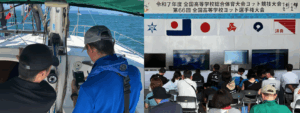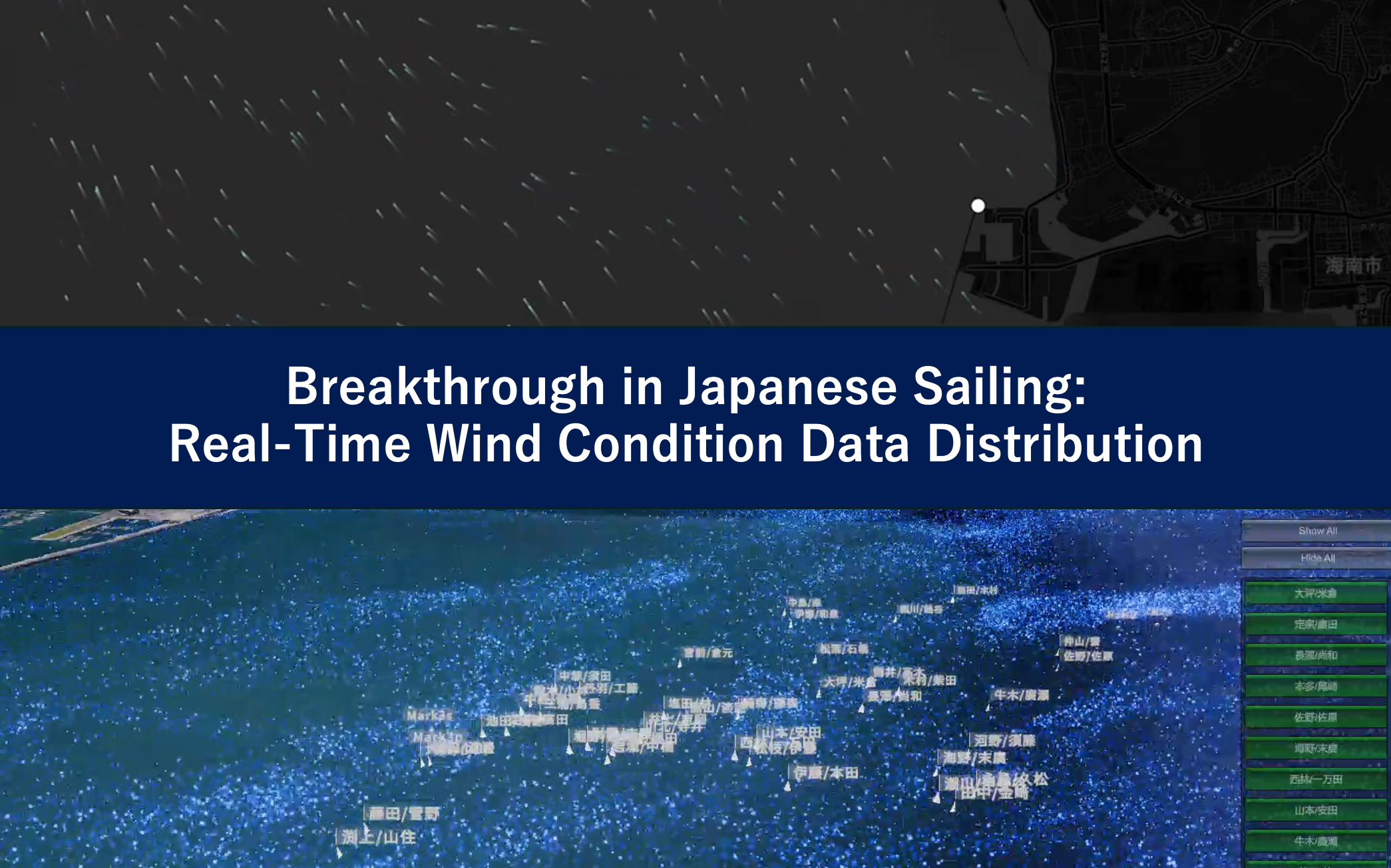【Report】Real-Time Wind Observation Data Distribution Debuts in Japanese Sailing Competitions — Supporting the National Training Center with “Sports × Technology” to Advance Sailing —
MetroWeather Co., Ltd. (Head Office: Uji, Kyoto; Representative Director, President: Junichi Furumoto; hereinafter “MetroWeather”) is proud to announce its collaboration with the Wakayama Sailing Center, the National Training Center for sailing in Japan. In July and August 2025, Metro Weather provided Japan’s first-ever real-time wind observation data distribution for three domestic sailing competitions.
◼️Background and Purpose
This initiative was inspired by the real-time wind observation data distribution using Doppler LiDAR technology during the international sailing competition “BIWAKO DRAGON INVITATION 2024” held in November 2024. The demonstration caught the attention of domestic sailing stakeholders, leading to a formal request for collaboration.
After careful consideration of the needs expressed, Metro Weather partnered with the Wakayama Sailing Center to deliver 2D and 3D real-time wind observation data using Doppler LiDAR during three major domestic sailing competitions held between July and August 2025.
Metro Weather joined this initiative with the aspiration to contribute to the future of sailing—a sport that transcends borders and languages, inspiring dreams and hope. Sailing is a historic sport conducted in harmony with nature, and through our technology, we aim to enhance competition management, athlete development, and spectator engagement.
◼️Supported Competitions
1. All Japan Middle Boat Championship
Dates: July 19 (Sat) – July 21 (Mon), 2025
Format: 2D Data Distribution
2. JSAF Junior Youth Sailing Championship
Dates: July 26 (Sat) – July 27 (Sun), 2025
Format: 2D Data Distribution
3. 2025 National High School Sports Festival Sailing Competition / 66th National High School Sailing Championship (hereinafter: Inter-High)
Dates: August 12 (Tue) – August 16 (Sat), 2025
Format: 2D and 3D Data Distribution
Note: The 3D data distribution was realized through collaboration with Red Dot Drone Japan Co., Ltd. for UI development and integration with Trac Trac Japan for live race tracking.
◼️Comment from Mr. Kazuya Nakamura
Executive Director, Japan Sailing Federation, Chairman, Wakayama Sailing Federation
This initiative marked a groundbreaking advancement for the sport of sailing. It brought an entirely new experience to race organizers, competitors, and spectators alike. Technologies previously accessible only at high-cost international events are now within our reach, which is astonishing. By continuing this effort, we believe it will elevate the level of athlete development and performance, increase public engagement with sailing as a spectator sport, and ultimately contribute positively to the sport of sailing.
(2D Real-Time Wind Observation Data Distribution)
This data distribution proved to be extremely beneficial for athlete development and race management, and it truly acted as a “game changer.”
In race management, where we primarily applied it this time, decisions could be made objectively without relying on experience or intuition. Everyone could visualize the invisible wind in the same way. For each race, we forecast wind speed and direction an hour in advance. To prepare for the next race, buoys indicating the course are moved in advance. With wind trend data, we were able to set the course more accurately.
Previously, multiple people were required to observe the wind—either by going to the actual location or gathering information from those upwind—and human error was inevitable. Even top-level sailors with extensive international experience were astonished to see wind changes at distant offshore points in minute-by-minute intervals.
In terms of athlete development, using this data for training and racing would provide crucial information to help athletes perform at 100%. What was once subjective can now be visualized as data. Coaches’ intuitive advice can now be shown and explained. With daily accumulation, the pace of improvement will accelerate. Additionally, since wind conditions are often influenced by terrain, athletes can learn a great deal—even at remote competition sites where wind observation is difficult—by analyzing conditions on-site and developing strategies accordingly. This will become a tremendous asset.
Furthermore, if this data can be utilized at race venues, coaches will be able to analyze conditions during the race and immediately review performance afterward, allowing athletes to approach the next race in a more advantageous position.

(3D Real-Time Wind Observation Data Distribution)
As a visual tool, it was engaging and impactful—especially for first-time viewers and beginners.
During the Inter-High TV broadcast from the venue, the usual format included footage from telephoto lenses and Trac Trac tracking data with live commentary. With the addition of 3D wind data, differences between boats became clearly visible. While there is still room for improvement in how we present wins and losses or strengths and weaknesses, this year’s event had the largest audience in the past five years and offered a high level of entertainment.
◼️2D Real-Time Wind Observation Data Distribution
High-precision wind observation data from Doppler LiDAR visualized in real-time on a map showing wind speed and direction.
Use Cases: Race management before, during, and after events; accessible via smartphones and tablets onboard race committee yachts.
◼️3D Real-Time Wind Observation Data Distribution
Real-time visualization of wind data over 3D terrain graphics, integrated with TracTrac’s boat tracking data.
Use Cases: Displayed on large screens at the Inter-High venue for spectator engagement.
